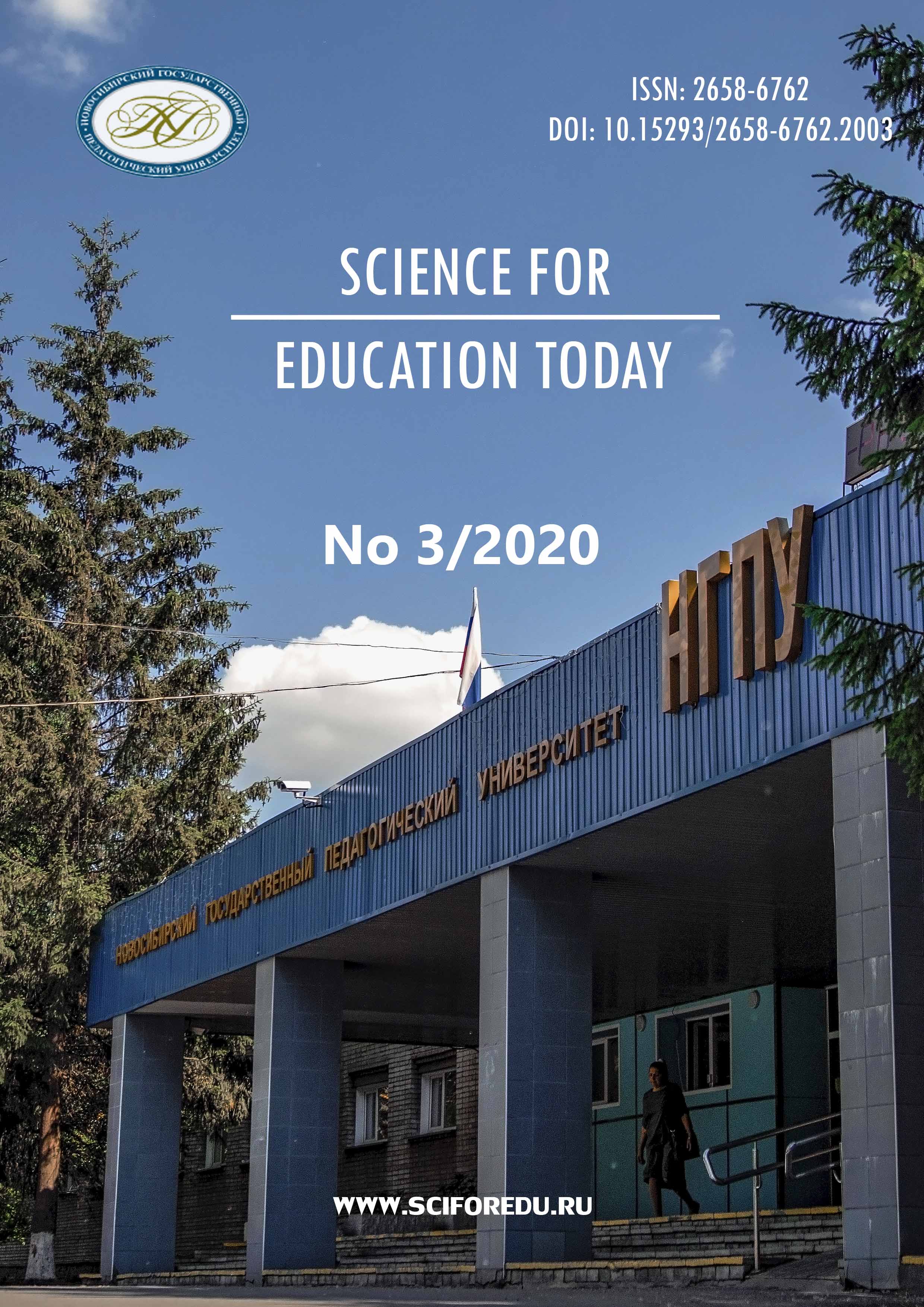Особенности проектирования персонализированной образовательной модели при работе с технологиями создания объёмных изображений
Designing a personalized learning model for working with technologies of creating three-dimensional images
Author(s): Elena Vitalievna Soboleva, Tatiana Nikolaevna Suvorova, Esen Yklasovich Bidaibekov, Takir Ospаnovich BalykbayevSubject(s): School education, Higher Education , Personality Psychology
Published by: Новосибирский государственный педагогический университет
Keywords: Three-dimensional modeling; 3D-technologies; Didactic potential; Personalization; learning trajectory, Digital society; Learning outcomes
Summary/Abstract: Introduction. The authors investigate the problem of realizing the potential of 3D-technologies for creating personalized learning trajectories. The purpose of the study is to identify the characteristic features of designing a personalized learning model when working with technologies for creating three-dimensional images. Materials and Methods. The study involves reviewing international and Russian scholarly literature on the issues of personalized learning and the use of 3D technologies in science and education. The experimental methods were employed to verify the theoretical features of designing a personalized learning model when working with 3D images. To evaluate the obtained data, the authors used empirical methods (observation and analysis of the test results and three-dimensional models). A criteria-based assessment matrix was developed. The educational experiment involved 10-11-grade students in Kirov (the Russian Federation). The statistical significance of the qualitative changes was verified by means of G test. Results. The authors conducted a theoretical analysis in order to clarify the concepts of ‘personalized learning’ and ‘personal learning trajectory’, which allowed them to identify the priorities of the digital society for the field of education. Further theoretical analysis revealed the key problems of personalized learning (choice awareness, determining the characteristics of the educational model, and designing learning trajectories) and considered them from the perspectives of teachers and students. The educational potential of 3D-technologies for improving learning outcomes and facilitating personalized learning was described. The design of a personalized environment when working with 3D-image creation technologies was described with the main focus on ‘Choosing your learning path’ model. Conclusions. The article summarizes the characteristic features of designing a personalized learning model when working in 3D modeling environments to improve learning outcomes, prepare competitive professionals, and create innovations in science and technology.
Journal: Science for Education Today
- Issue Year: 10/2020
- Issue No: 3
- Page Range: 108-126
- Page Count: 19
- Language: Russian

